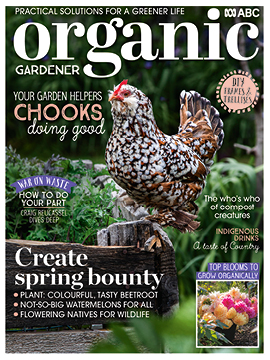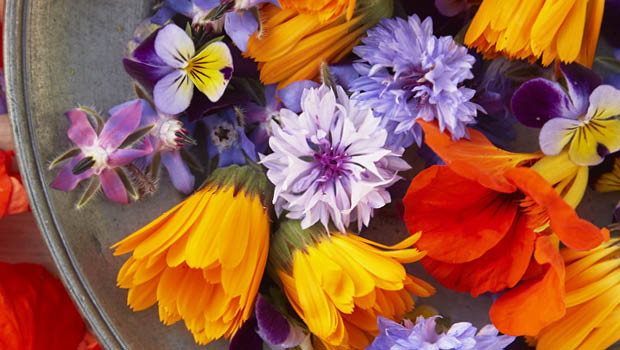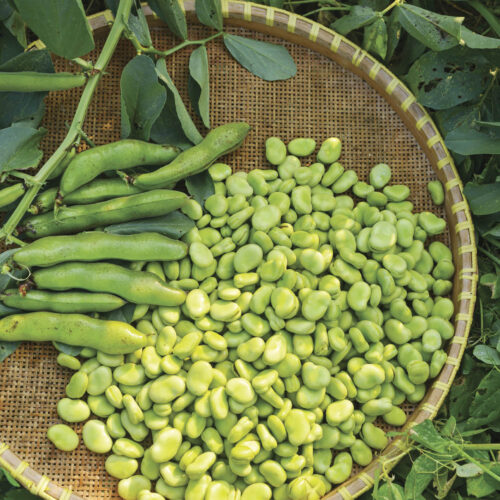Growing edible flowers in your garden
2020-12-16T02:45:05+11:00
Edible flowers add a colourful spark and fresh flavour to dishes, are the basis of health-giving teas, and create delicious cordials and preserves.
Flowers have often been seen as symbols of beauty, love and happiness, and this celebration of nature can be brought to the table as well. Learning to add more flowers to our lives and our plates can tickle our tastebuds and lift our spirits.
Here’s four of our favourites:
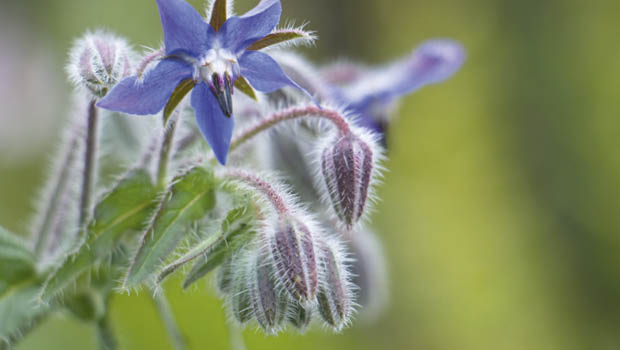
Borage (Borago officinalis)
Quick and easy to grow in a sunny spot in the garden, borage is an annual that is generous with its sky-blue, cucumber-tasting flowers. This plant is best sown directly in the garden from seed, in spring and again in autumn (it also self-sows readily), growing quickly to around 50–60 cm tall.
Uses: The flowers look delightful and taste good in salads, can be floated in drinks, or frozen in ice cubes.
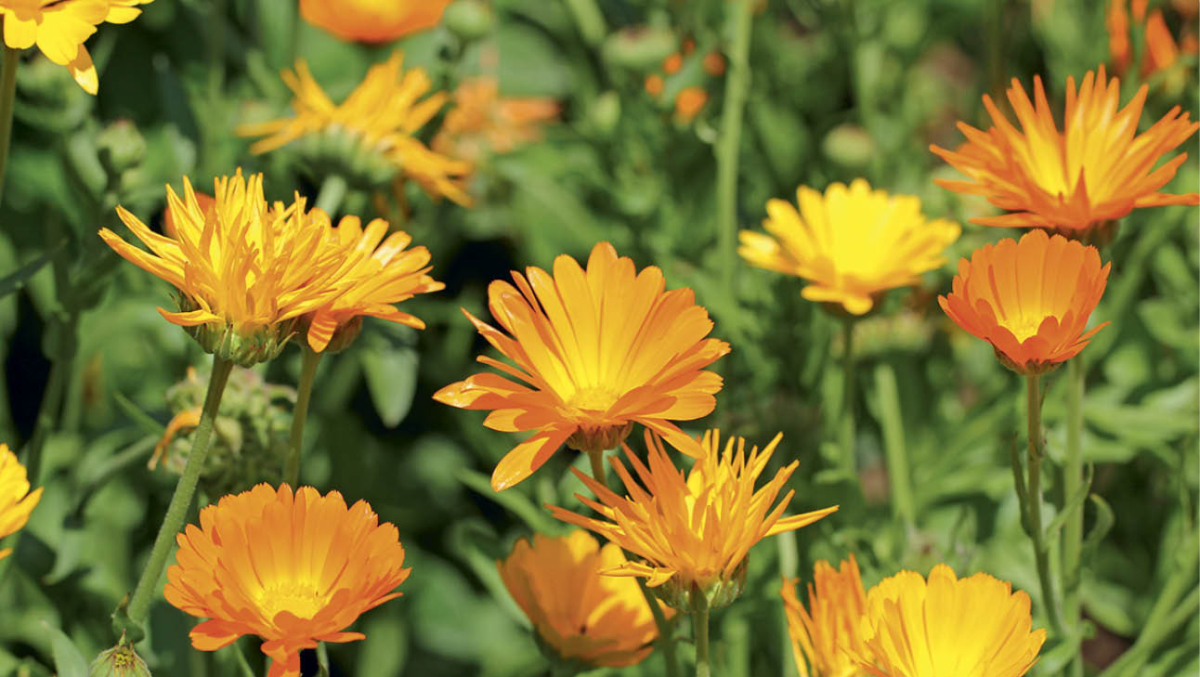
Calendula (Calendula officinalis)
These sunny-faced sweeties can be double or single flowers of orange or yellow petals. Plants grow well in pots or tucked in anywhere sunny in the garden, including between vegetables. Calendula (also known as pot-marigold) also self-seeds in the garden. Sow seeds in autumn or spring, or if in a hurry, purchase potted plants or seedlings. Be aware that different forms will cross-pollinate.
Uses: The mild-tasting petals are plucked and used in scrambled eggs for ‘eggstra’ brightness, tossed through leafy salads or used as an exotic flourish on sweet or savoury dishes. They were traditionally added to rice as a cheap saffron substitute. The petals can be used medicinally and in tea.
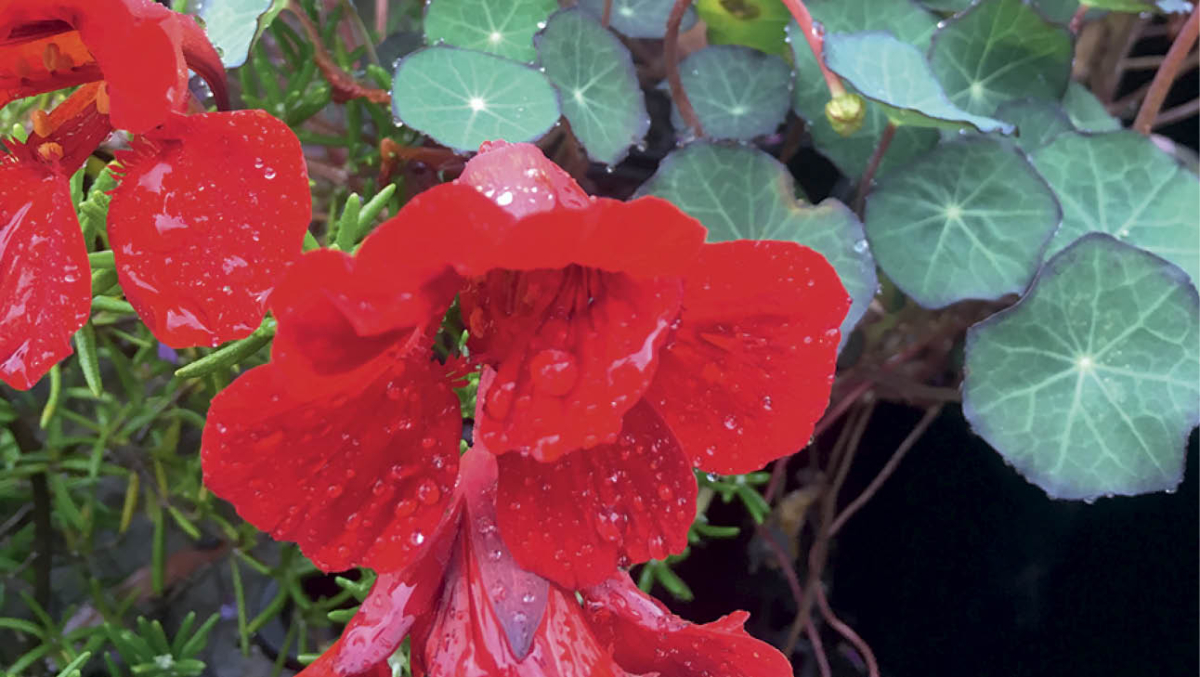
Nasturtiums (Tropaeolum majus)
Choose between triffid-like trailing varieties such as ‘Jewel Mix’, ‘Alaska Mix’, or pale yellow ‘Milkmaid’ and the lesser known but well-behaved clumping varieties, such as dark red ‘Empress of India’ or ‘Black Velvet’. Nasturtium varieties cross with each other so if you plant two types in your garden your flowers may change over time. Nasturtiums self-seed happily in the garden or you can save dry seeds in good storage conditions for three years. Plant seeds in spring and autumn in pots, wall gardens or between vegetables. Trailing types look great sprawling under fruit trees as companion plants or in hanging baskets.
Uses: Peppery tasting flowers add colour and interest to salads, either whole or pulled apart. Also, stir through rice or add to omelettes.
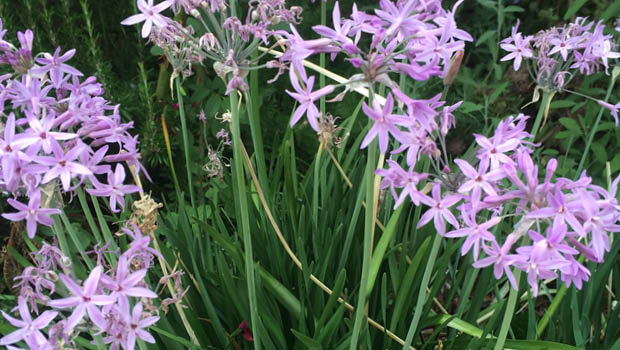
Society garlic (Tulbaghia violacea)
Society garlic is widely planted by landscapers for its long-flowering and hardy growth habit, but few people know that the showy purple flowers are also edible. Plants grow into tidy clumps around 30cm high and wide with the flower stems reaching 10cm or so above the foliage. The leaves are also harvested but not the roots. There are also varieties with white flowers, smaller growth habits and variegated leaves.
Uses: The flowers may be seen on TV cooking shows as fancy garnishes, but in the humble home kitchen they lend a subtle garlic taste and a splash of colour to salads.
More edible favourites:
Agastache ‘Sweet Lilli’
Carnations & pinks: Dianthus species
Chives: All types
Dahlia species
English lavender Lavandula officinalis
Fruity sage Salvia dorisiana
Lawn daisy Bellis perennis
Rocket Eruca vesicaria
Snapdragons
Snow pea: Pink and purple flowers look best, but white also edible
Wild rocket Diplotaxis tenuifolia
Zucchini: All types
______________________________________________________________________
Karen Sutherland also has a special interest in native plants. Here’s a couple of her articles:
And if you’re interested in native bees:
How to get the native bee buzz
____________________________________________________________________
Karen Sutherland wrote all about edible flowers in our Summer 2021 issue (OG 122). You can purchase our latest issue at MyMagazines — you can also get back issues!
